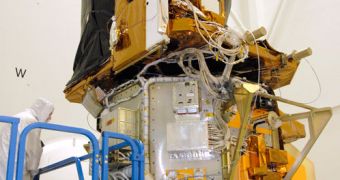Working at a facility in Gilbert, Arizona, engineers at the Virginia-based Orbital Sciences Corporation (OSC) recently managed to finish installing the second main instrument on the Landsat Data Continuity Mission (LDCM) satellite.
The vehicle can now be classified as a complete observatory, experts at the American space agency say. NASA is managing the construction and launch of Landsat satellites for the US Geological Survey (USGS).
Landsat is the longest-running, satellite-based remote sensing program ever conducted. Its spacecraft first started collecting data from orbit in July 1972, and will continue to do so once the LDCM launches, on February 11, 2013.
OSC is the main contractor in charge of assembling and testing the vehicle. The two main instruments aboard LDCM are the Thermal Infrared Sensors (TIRS) and the Operational Land Imager (OLI). Their predecessors on other Landsat satellites collected millions of images that far.
TIRS was delivered to OSC's Arizona facility this February. After fixing a helium leak from its cryogenic cooler, the instrument was reinstalled on LDCM's main bus, alongside OLI. The assembled satellite is now awaiting further testing.
The TIRS instrument was put together by engineers at the NASA Goddard Space Flight Center (GSFC), in Greenbelt, Maryland, in just 43 months. This is a very brief interval to take such a complex device from the drawing board to testing. Usually, it takes 55 months to do this.
OLI was not built by the GSFC team, but by engineers at Ball Aerospace & Technologies Corporation. The ground systems for the LDCM mission were put together by scientists at the US Geological Survey (USGS), one of the main beneficiaries of Landsat data.
Up until now, the remote-sensing program featured Landsat 1 (1972), Landsat 2 (1975), Landsat 3 (1978), Landsat 4 (1982), Landsat 5 (1984, still functional), Landsat 6 (1993, failed to reach orbit) and Landsat 7 (1999, still functional).
LDCM will ensure continuity for this program for a few more years. The spacecraft will take off aboard an Atlas V delivery system, in the 401 configuration, from the Vandenberg Air Force Base, in California.

 14 DAY TRIAL //
14 DAY TRIAL //